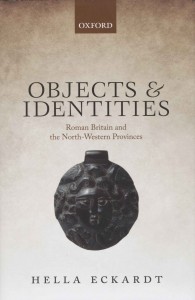We are publishing an open letter in response to a Guardian Comment is Free blog by Simon Jenkins (former Chairman of The National Trust and Editor of The Times) – which critiques the research project Professor Roberta Gilchrist has been leading at Glastonbury Abbey, in Somerset.
Roberta has had widespread national press and broadcast coverage this week for the work – including The Guardian, The Times, The Independent, Daily Mail Online, Daily Telegraph Online, BBC News Online, BBC Radio 4, BBC 5Live – as well as international interest and regional and local outlets.
The project reassesses and reinterprets unpublished records from excavations at the Abbey between 1904 and 1979, which show that the site’s best known archaeological ‘facts’ are themselves myths – many of these perpetuated by excavators influenced by legends that the Abbey was the reputed burial place of the legendary King Arthur and earliest Church in Britain, thought to have been founded by Joseph of Arimathea.
The project, conducted with partners Trustees of Glastonbury Abbey and funded by the Arts and Humanities Research Council, involved a team of 31 specialists.
“Dear Simon
We are responding to your opinion piece yesterday, which mentioned the four-year project on the archaeology of Glastonbury Abbey.
The news headlines this week have focused on how the monks spun the Glastonbury legends, something that historians have understood for many decades, but has clearly come as news to journalists. The research project was actually focused on the archaeological excavations that have taken place at Glastonbury. It challenged some of the archaeological ‘myths’ spun by 20th-century excavators, as the full story on our website highlights.
We understand that you used the research to make a broader point about religious ‘mythmaking’ in the Middle Ages right up to modern-day extremist beliefs; however, the tone in relation to the project was disappointing.
The research was a detailed, comprehensive analysis, assessment and interpretation of all known archaeological records from 36 separate excavations at the Abbey between 1904 and 1979, none of which have ever been published. We brought modern scientific approaches to bear on antiquarian excavations. We revealed important new evidence – including ‘Dark Age’ occupation, Saxon churches and glass-working and the extensive rebuilding of the abbey in the middle ages. Highlights can be found on the project website.
The work is part of a 10-year partnership between Glastonbury Abbey and the University of Reading, involving colleagues from numerous universities, museums and archaeological units. We are continuing to work together to bring our new findings to visitors to Glastonbury Abbey and to enrich their experience through digital reconstructions, a new guidebook and education packs.
We are happy to send you a copy of the 500 page monograph, which was published last month.
We would also be delighted to host you at the Abbey itself. Given your former role as Chair of The National Trust, we have a shared interest in understanding and enhancing the nation’s heritage.
Professor Roberta Gilchrist FBA, University of Reading
Janet Bell, Director of Glastonbury Abbey”





